The celebrated Mr. K — author of the novel JSA: Ragnarok — picks his fave comics stories without pictures…
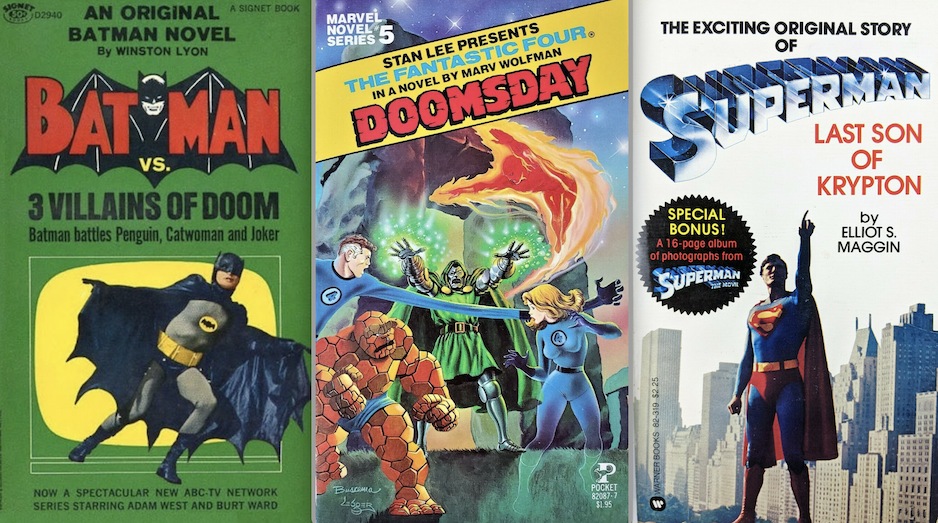
—
UPDATED 7/15/23: This first ran in November 2021 for the holiday season. Thing is, it’s just as relevant today — because who isn’t looking for some groovy beach reading right now? So have at it! And bring the sunscreen! — Dan
—
By PAUL KUPPERBERG
I hope you all had a great Thanksgiving and Black Friday… which is not, contrary to what it sounds like, DC’s next company-wide crossover event that promises to change everything forever. Again. Until the next time. No, this is the crass, commercial Black Friday, the “Ladies and gentlemen, start your wallets!” time of the holiday gift-buying season.
Unlike many others, I do not revile or mock Black Friday. Indeed, as a producer of consumer goods myself, I’ve embraced the crassness and commercialism and did not so much as bat an eye before agreeing when “Santa” Dan Greenfield suggested I use the season’s columns to shamelessly pimp — I mean, subtly promote — my own product, i.e., my books.
Which brings me to one of my favorite corners of comic book storytelling: the comic book novel. Publishers like Whitman had been mining the comic strips since the 1930s for a long-running series of hardcover children’s novels featuring such strip stars as Blondie, Little Orphan Annie, Red Ryder, and others. Superman made his debut prose appearance (outside of a few filler text stories in the comic books) in the 1942 novel, The Adventures of Superman by George Lowther.
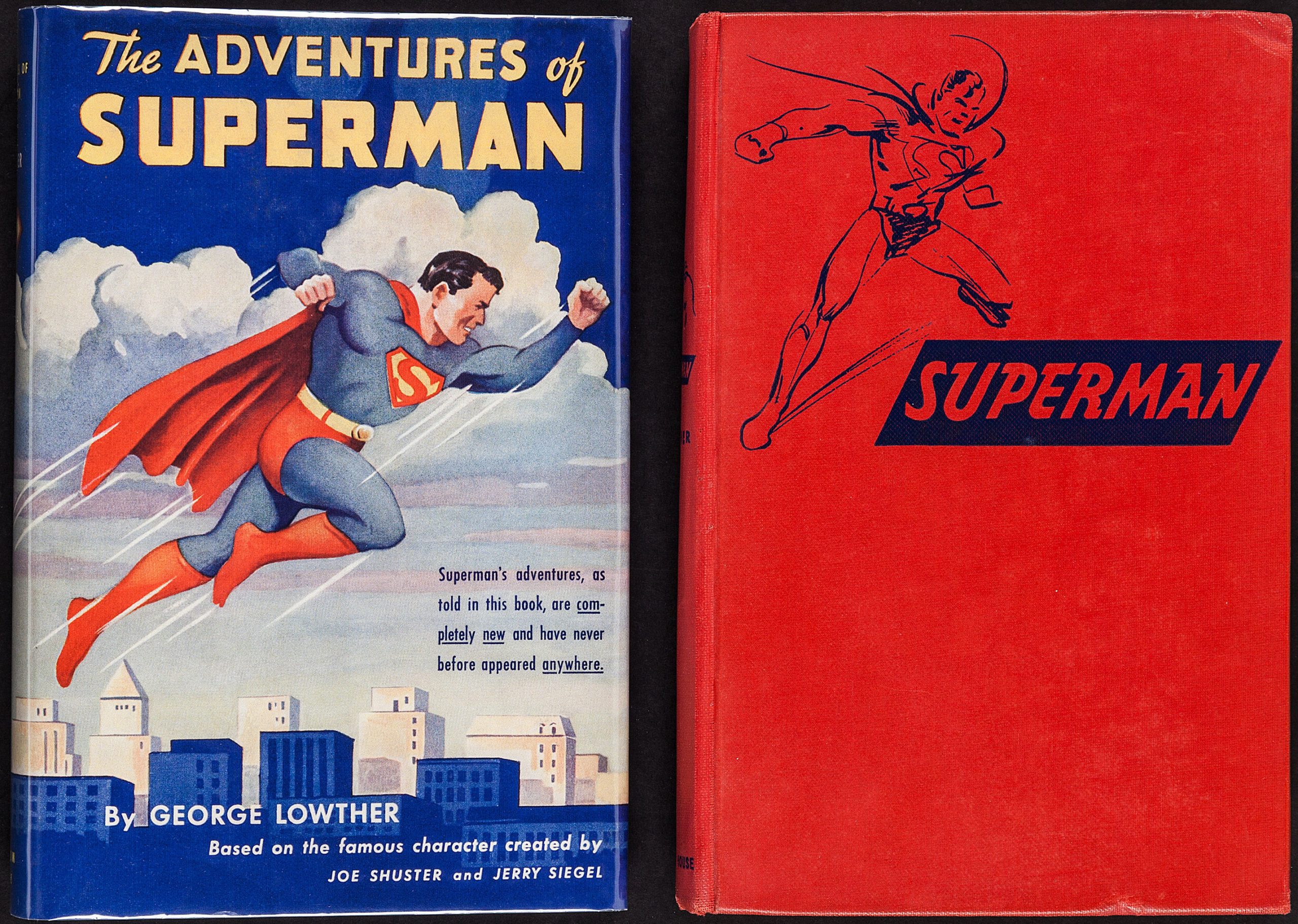
The first prose treatment of a superhero I ever read was 1966’s Batman vs. the Fearsome Foursome — a novelization of the 1966 Batman theatrical film rushed out to take advantage of the ABC-TV show’s explosive popularity — and I was hooked! The lack of pictures was more than made up for by the depth the prose brought to the storytelling. In a comic book, we might be treated to captions that dove into the character’s thoughts but were usually just an excuse to reiterate what the picture was showing anyway. My line about Silver Age storytelling is that a panel would show Superman flying over Metropolis, with a caption like, “One day, as Superman flies over Metropolis,” as Superman’s thought balloon reads, “I better hurry if I want to get to the other side of Metropolis in time!”
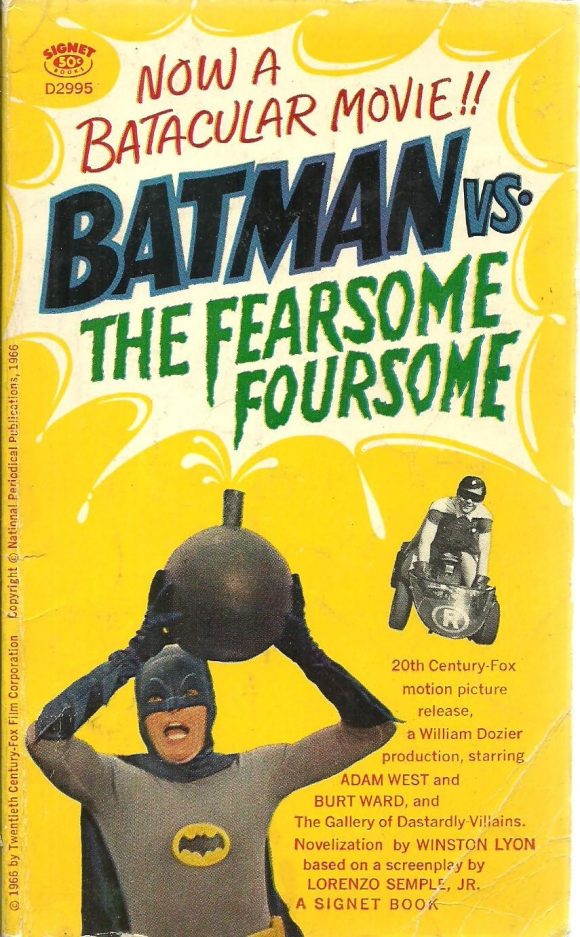
Prose not only eliminated this sort of redundant storytelling but offered writers the opportunity to actually delve into characters’ thoughts, and motivations. Even a plot as ridiculous as Batman’s rogues vying to win “the coveted Tommy — the crimeworld’s top award” (Batman vs. 3 Villains of Doom) is rendered that much more credible because it’s in the form of a “real” rather than “comic” book.
There have been literally hundreds of comic book novelizations for readers of all ages published in the decades since, many of which I’ve read, several of which I’ve edited, and a handful of which I wrote, including Marvel Novel Series No. 8: Spider-Man in Crime Campaign and Marvel Novel Series No. 11: Spider-Man and the Hulk in Murdermoon (both 1979), and JSA: Ragnarok (2020).
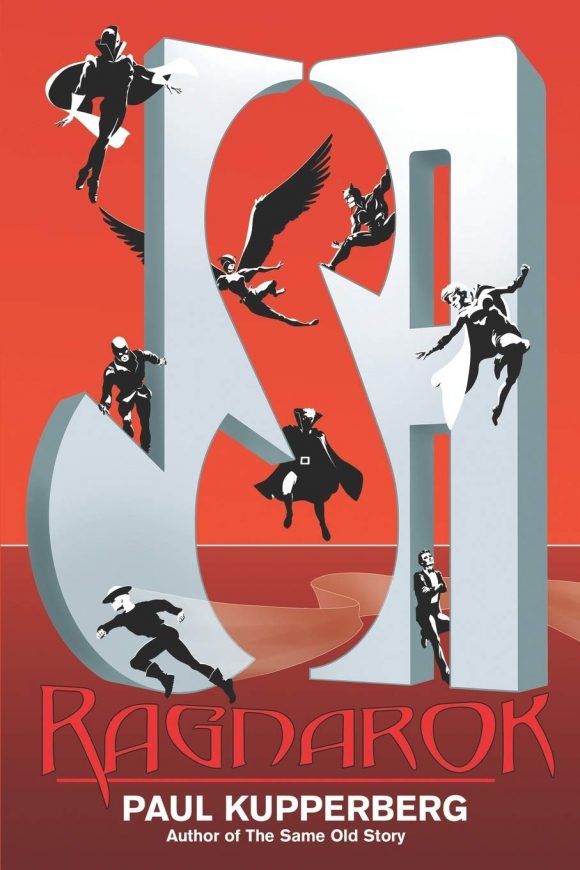
(Speaking of which, here’s the crass, commercial part: JSA: Ragnarok is available signed & personalized by me for $19/US, $30 Canada, payable to PayPal.me/PaulKupperberg or on Amazon.com. Crime Campaign and Murdermoon are both available from me as PDFs, $7 each, also payable to PayPal.me/PaulKupperberg. We now return you to our regularly scheduled column…)
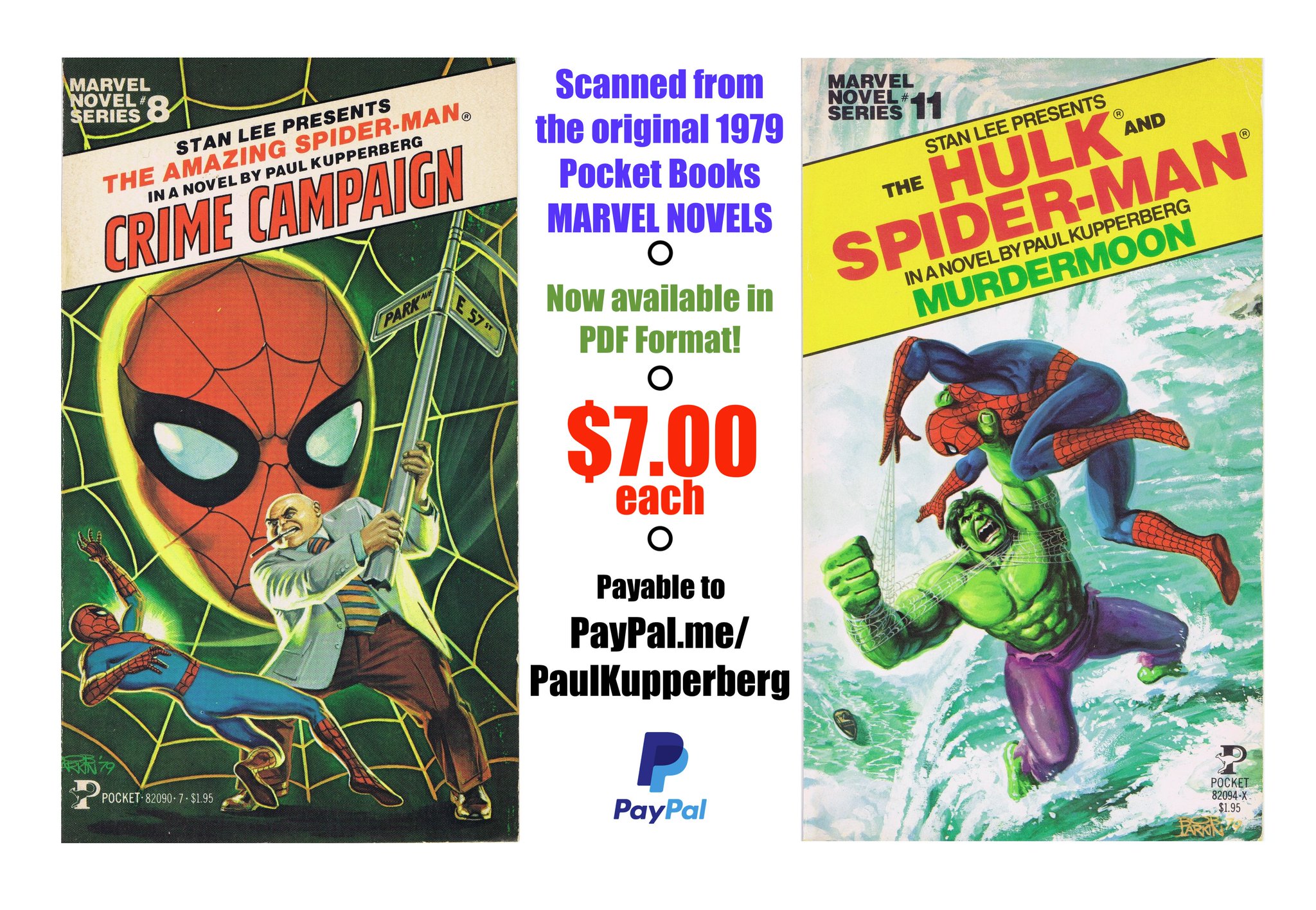
Usually when I’m putting one of these columns together, I’m all over the internet doing research, downloading images, looking for an artist or writer’s bibliography, rereading old stories, etc., but not this week. The only research I had to do was wander over to the bookshelf and pluck 13 titles from the shelf. And yes, once again, the total is weighted toward the DC side. What can I tell you? The heart wants what the heart wants.
Here then, in chronological order, MY 13 FAVORITE COMIC BOOK NOVELS:
—
Batman vs. 3 Villains of Doom (Signet Books, 1966). Holy words and no pictures, Batman! It was 1966, I was 11 years old, and my world was consumed by pop culture, particularly Man from U.N.C.L.E. and, of course Batman. I had already discovered the prose world of U.N.C.L.E. in late 1965, penned by the ubiquitous Michael Avallone (author of over 200 novels, most media tie-ins, under some 17 pen names, whom one Amazon reviewer calls “a fast writer who catered to fast reading”), but Batman vs. the Three Villains of Doom by Winston Lyons (pseudonym for former comic book writer turned novelist and TV and screenwriter William Woolfolk) brought more life to the Caped Crusader and friends for me in the pages of this book than did Adam West, who actually was live on TV.
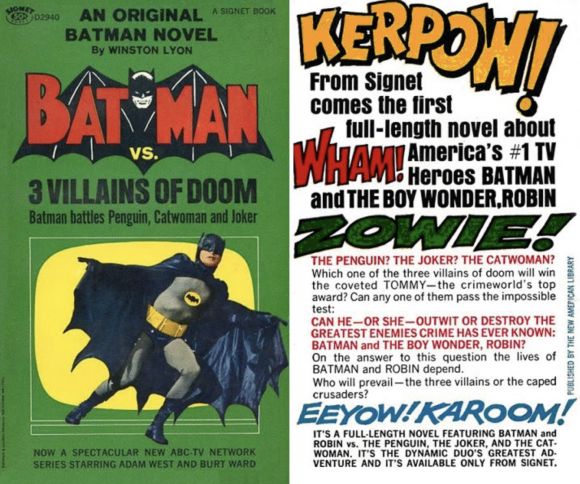
—
Captain America and the Great Gold Steal (Bantam, 1968). Marvel tested the prose waters a year later, first with Avengers vs. the Earth-Wrecker by Otto Binder, long-time comic book writer and science fiction author. It was, in a word, terrible, but their second attempt, Captain America and the Great Gold Steal by Ted White more than made up for that failure. A plot to steal billions in gold from the Federal Reserve is the backdrop for a well written adventure story by one of the decade’s up and coming young science fiction writers.
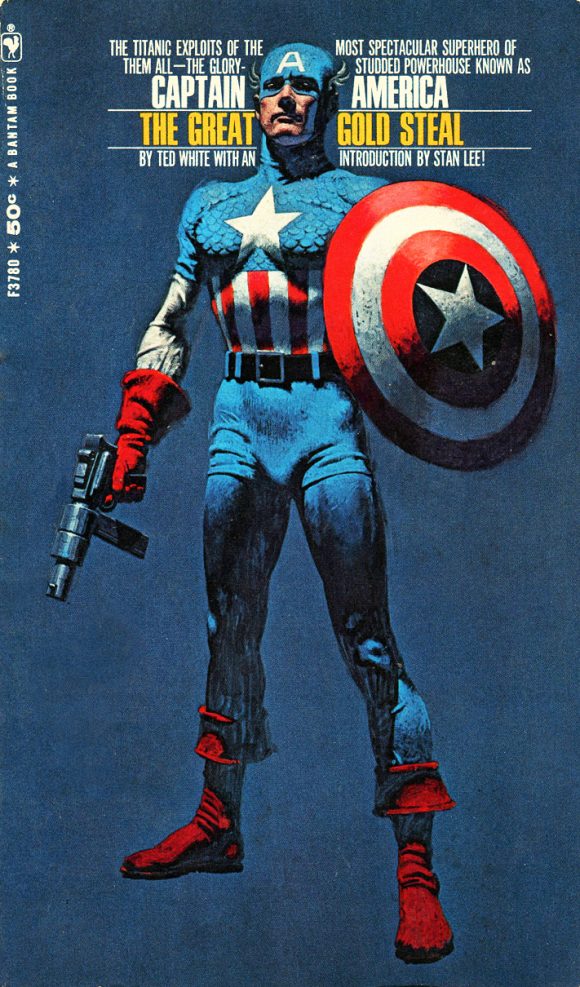
—
The Story of the Phantom #1: The Ghost Who Walks (Avon, 1973). Lee Falk’s long-running comic strip hero made the jump to prose in 1973 in the first of 15 novels written by Falk, Basil Copper, Frank S. Shawn, and others. Interwoven with a story about the current 20th and 21st Phantoms, the history of the Phantom lineage is explored across its incredible 400-year history. If there was a college course on the Phantom, this would be its textbook.
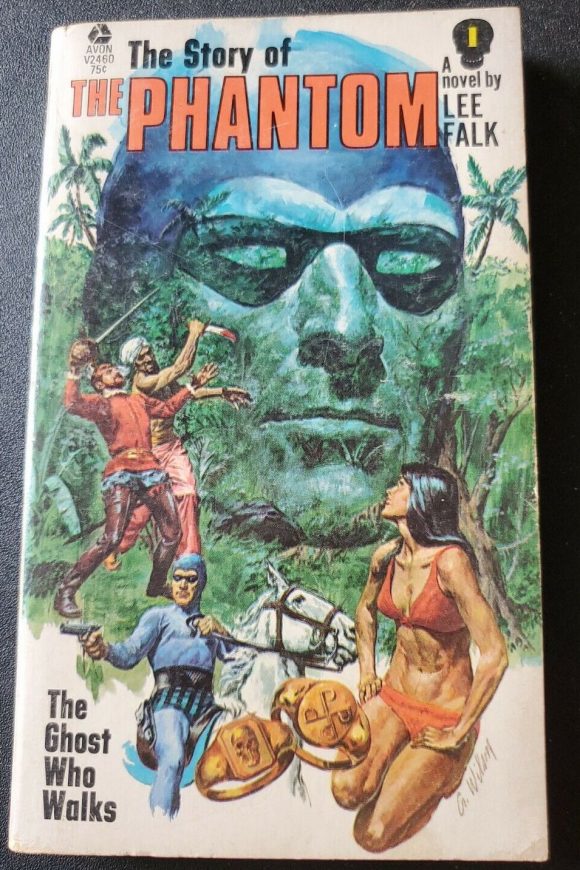
—
Superman: The Last Son of Krypton (Warner Books, 1978). Thanks to a contractual dispute between screenwriter Mario Puzo and the producers of Superman, the Movie, the publication of a straight novelization of the film was impossible. That, as it turned out, was a good thing for lovers of comic book novelizations, because it meant that Warner Books published instead Elliot S. Maggin’s original Superman novel, Last Son of Krypton, which would be followed up by the equally excellent Superman: Miracle Monday in 1981. Already known for writing the definitive comic book Man of Steel, Elliot caught the excitement of the movie and breathed the same crackle of reality into the comic book inhabitants of Metropolis that Richard Donner brought to their cinematic counterparts.
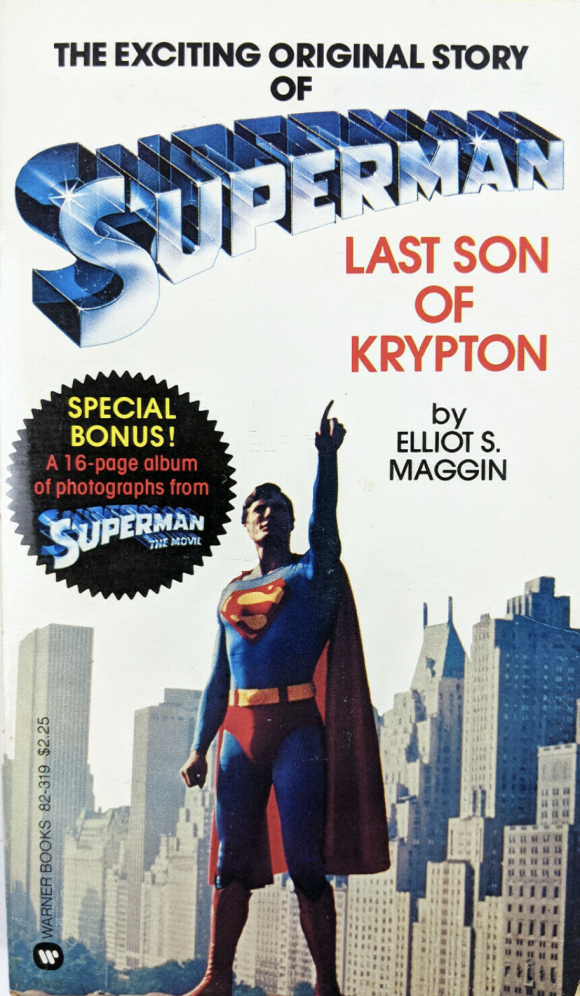
—
Marvel Novel Series No. 5: Fantastic Four, Doomsday (Pocket Books, 1979). Ninety-seventy-nine was the year of the Marvel novel. Literally. Every month saw the publication of a new book in Pocket’s Marvel Novel Series, packaged, and sometimes also written by, Len Wein and Marv Wolfman. Marv, in fact, authored one of my picks from the series, May’s Doomsday, an epic confrontation between the Fantastic Four and Dr. Doom in “a chilling tale of human endurance, and the search for life beyond death,” published under a cover by John Buscema and Pete Ledger.
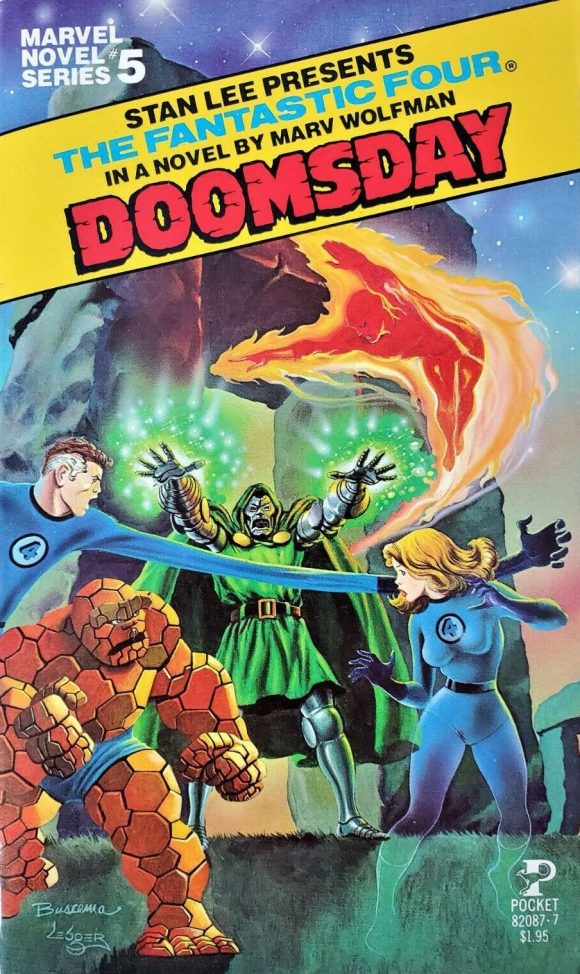
—
Marvel Novel Series No. 7: Doctor Strange, Nightmare (Pocket Books, 1979). July brought William Rotsler’s Doctor Strange novel, Nightmare to the spinner rack. Rotsler caught the tone of the comic book series and added his own take on the realm of the evil Nightmare to this tale of the Master of the Mystic Arts.

—
The Death and Life of Superman (Bantam, 1993). The 1990s “Death of Superman” was a stunt gone mad, growing into this media monster selling millions of comic books and consuming a year’s worth of the four monthly Superman titles and assorted tie-ins and specials and one-shots. The Death of Superman. The Rise of the Supermen. Superman Reborn. Talk about tangled webs (spoiler: Superman did die but then he got better), the story was enormous, and DC Licensed Publishing Editor Charlie Kochman turned to veteran comic book scribe and member of the “Death” squad of writers Roger Stern to turn it into a coherent novel that would be shorter than War and Peace or Moby Dick. Roger did it, IIRC writing up until press time to get it all in.
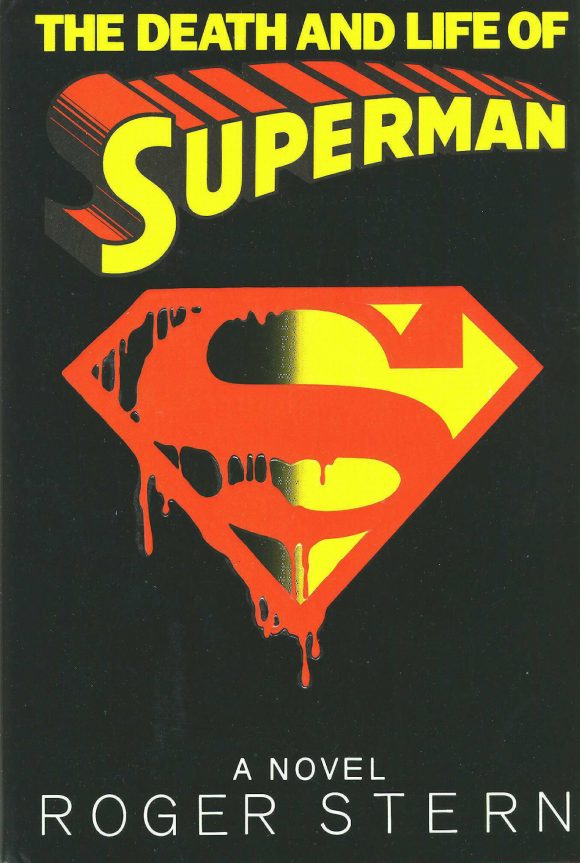
—
Kingdom Come (Warner Books, 1998). Another novelization of a comic book event, Mark Waid and Alex Ross’ Kingdom Come. Elliot S. Maggin returned to superhero prose after far too long an absence, taking the already iconic miniseries to new heights. Because of space limitations and the unattractiveness of overwritten, overblown captions and word balloons, even the best comic book story can only just scratch the surface of a situation compared to the places a novel can go. Like every great novelization, Kingdom Come captures the essence of the original, adding layers and textures, and bringing out the nuances for which there’s often no room on the comic book page.
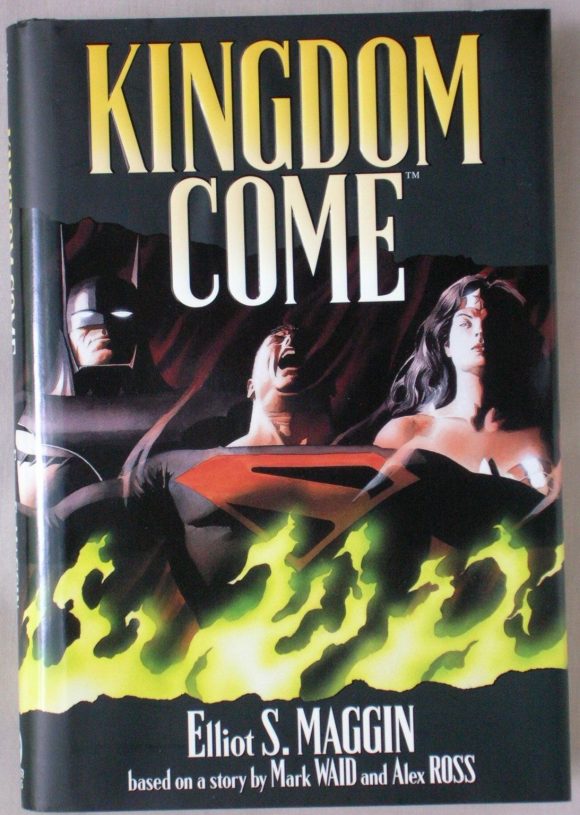
—
Captain America: Liberty’s Torch (Berkeley Boulevard, 1998). As relevant today as when it was written in 1998, Tony Isabella and Bob Ingersol’s Liberty Torch pits Captain America and the Falcon against “a militia group that feels America has fallen from its position of strength.” Then it’s up to Cap to defend America and himself when he’s kidnapped by the group and put on trial for crimes against their American dream. Between the skills of comic book writer Isabella and writer and attorney Ingersoll, the story never flags. Also, cover by Jim Steranko.
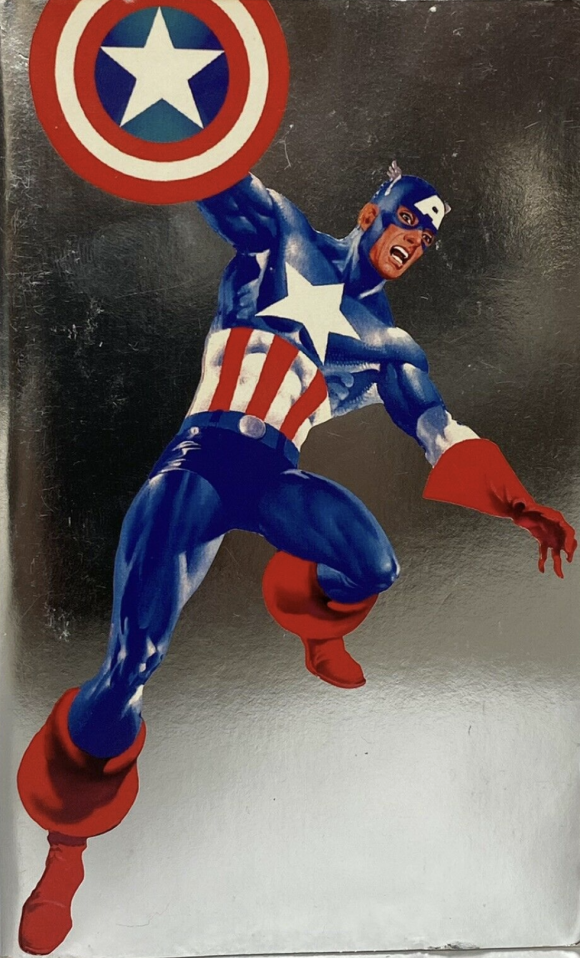
—
Crisis on Infinite Earths (iBooks, 2005). I’m prejudiced in favor of this and the next book, having served as editor of both in DC’s Licensed Publishing department. I knew the only person to write the long-awaited novelization of the DC Universe-shaking 1980s Crisis on Infinite Earths story was the comic book’s writer, Marv Wolfman, but neither of us wanted the novel to be told in an anonymous third person omniscient narrator’s voice like the series. The project finally fell into place when we realized who the narrator had to be: Barry Allen, the Flash. If you can find a reasonably priced copy (it was in the process of being shipped out when iBook declared bankruptcy and ceased operations and as a result, not all the orders made it out of the warehouse), grab it. This is like the COIE Cliff Notes.
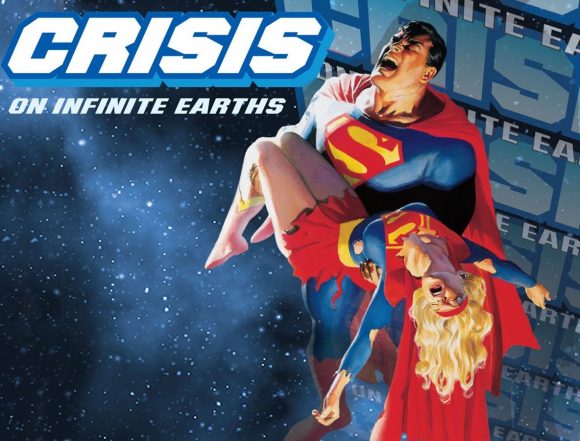
—
Green Lantern Sleepers: Book Three (iBooks, 2005). Everyone who’s ever read one of his comic book stories knows Christopher Priest (the creator formerly known as James Owsley) can write. Really write. And I, having worked side-by-side with Priest in DC’s Development Group in the 1990s (not to mention us editing one another on projects over the years) also knew he could write prose. He put together this document while still an editor at Marvel entitled “Edited by Owz” — essentially a manual for freelancers on the care and feeding of the editor — that is a masterpiece of useful information and snark, so much so that his superiors at DC told him to stop distributing it. (I still have my updated copy; he used a thing I wrote for an Arion the Immortal text page about what a wretched human being he is as the introduction.) Anyway, I finally convinced Priest to write the outline for Sleepers, a trilogy of Green Lantern novels, and to author the third book, starring Hal Jordan, then in his Spectre phase, which is freakin’ brilliant (having nothing to do with my editing; I just fixed some spelling).
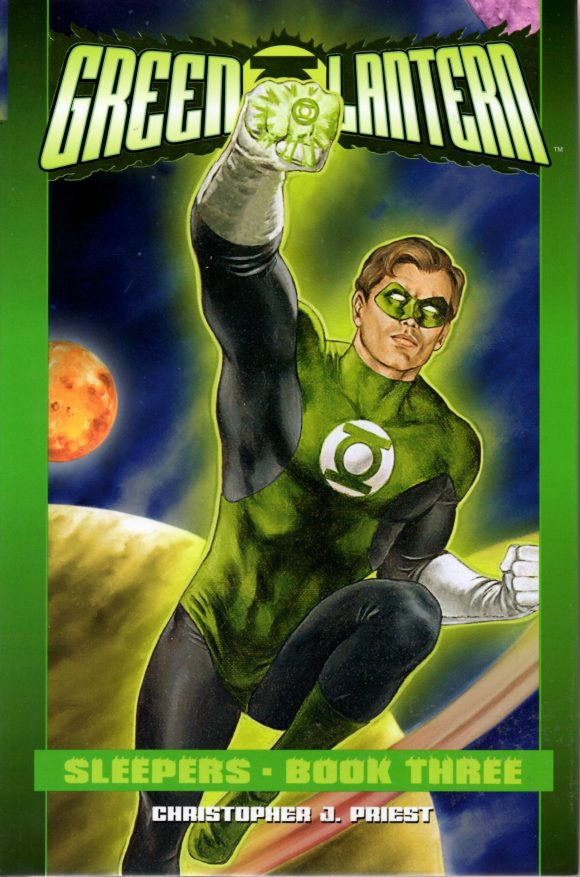
—
It’s Superman! (Chronicle Books, 2005). I originally read Tom DeHaven’s It’s Superman!, the tale of a Depression-era Superman more closely related to the Fleischer cartoons of the 1940s than those early comic book stories, in manuscript, and then I read it again when the office copies of the printed book arrived, and I’ve reread it several times since. DeHaven, whose “Derby Dugan” trilogy about the artists of a comic strip from the 1890s to the 1960s should be on your “must read” list if you haven’t already discovered them, gives us pretty much a literary fiction “Elseworlds” story.
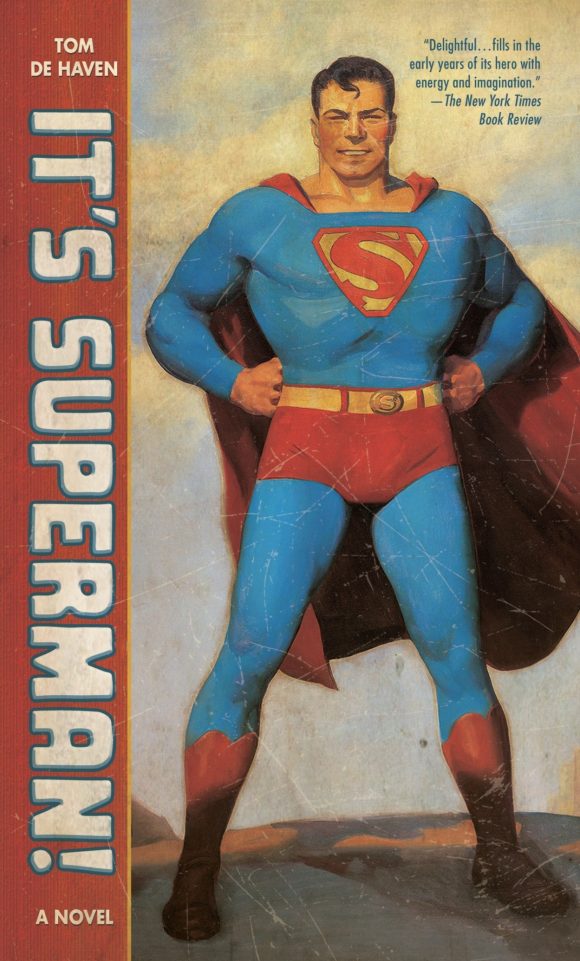
—
DC Universe: Helltown (Warner Books, 2006). Denny O’Neil’s greatest strength as a writer was, as far as I could tell, his lack of ego. Denny didn’t put words on paper so people could tell him how clever he was. He did it to tell the story with the minimum of fuss and verbiage. Ditto his prose work. Denny authored a number of short stories and novels in his career, most of the longer form work in later years. One of his best comic works was the 1980s Question with artist Denys Cowan, which served as the basis for Denny’s novel in a series of “DC Universe” novels from Warner Books, Helltown.
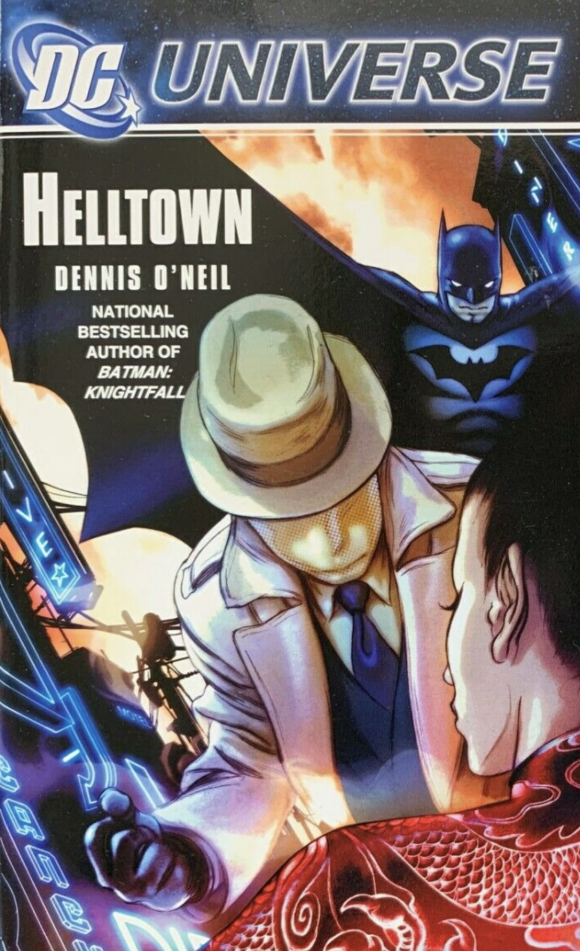
—
The Flash Crossover Crisis: Legends of Forever (Amulet, 2020). Barry Lyga (New York Times bestselling author of Bang) has created his own Flash “novelverse” inspired by the WB’s “Arrowverse” shows, including the trilogy, The Flash Crossover Crisis: Legends of Forever, where dozens of heroes fight to save the Multiverse, and where anyone might pop up, from Superman to Ambush Bug. Forget the young adult label; Lyga knows his comics and, more importantly, knows how to write characters as real human beings instead of costumes with dialogue.
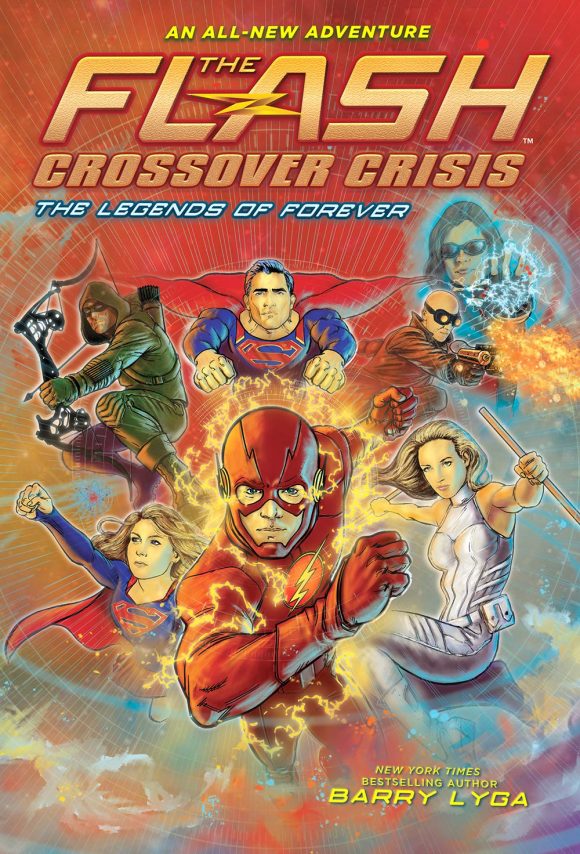
—
MORE
— PAUL KUPPERBERG: My 13 Favorite 1960s Comic Book Books. Click here.
— PAUL KUPPERBERG: My 13 Favorite DENNY O’NEIL Books — Comics and Prose. Click here.
—
Sure, you know Paul Kupperberg as the prolific writer of over a thousand comic books for such characters and series as Superman, Aquaman, Doom Patrol, Vigilante, Life with Archie, Bart Simpson, Scooby-Doo, and dozens more for DC Comics, Archie Comics, Bongo Comics, and others, and that he is also the creator of the series Arion, Lord of Atlantis, Checkmate and Takion, and is a former editor for DC, Weekly World News, and WWE Kids Magazine. But Paul is also the author of numerous books, including the superhero novel JSA: Ragnarok and the comics industry-based murder mystery, The Same Old Story, not to mention (but we will anyway) Paul Kupperberg’s Illustrated Guide to Writing Comics, I Never Write for the Money, But I Always Turn in the Manuscript for a Check, Direct Comments: Comic Book Creators in their Own Words, The Unpublished Comic Book Scripts of Paul Kupperberg and Son of the Unpublished Comic Book Scripts of Paul Kupperberg. You can follow Paul at PaulKupperberg.com and at Crazy8Press.com.

November 27, 2021
Last Son of Krypton has hands-down the best version of Lex Luthor I’ve ever read.
November 29, 2021
https://ghostwhowalks.fandom.com/wiki/Phantom_novels
The Story of the Phantom #1: The Ghost Who Walks (Avon, 1973). Lee Falk’s long-running comic strip hero made the jump to prose in 1973
_________________________________________________________________________________________________
The first novel featuring The Phantom was called “The Son of the Phantom”, and was first published in 1944 by Whitman Publishing Company. The novel was written by Dale Robertson and was based on a Sunday strip story called “The Childhood of the Phantom”. The story is about the current Phantom’s childhood in the jungle, his education in America, the death of his mother Maude, and his return to the Deep Woods to take up on the mantle of the Phantom from his dying father.
_________________________________________________________________________________________________
Also, if newspaper strip properties occur in the set of comic book charaters, which resembles perhaps placing papier-mâché in with paper towel, then prose Don Winslow novels preceded the Lowther novel mentioned.
http://c.web.umkc.edu/crossonm/donwinslow.htm
July 18, 2023
I know it is not everyone’s cup of tea, but I LOVE Peter David’s Hulk- What Savage Beast.
July 15, 2023
The only book on this list that I’ve read is Tom DeHaven’s “It’s Superman!” and it’s terrific. A legitimate literary novel with ambitions way beyond being a licensed product tie-in. It’s a complete deconstructionist reinvention of the character that rebuilds him and his supporting cast from the ground up. I cannot recommend it enough.
July 16, 2023
I’ve read most of those. I do like the George Lowther Superman. He also was involved with the radio adventures of Superman, maybe as director? The only one on the list I haven’t read is the Green Lantern. The 60’s Marvel books were more adult stories, and I did read all the Marvel releases in the late 70’s. Looking back, I didn’t realize Kingdom Come and Last Son Of Krypton had the same author. Great article, Paul
July 19, 2023
I’ve got/read all of these except the last 2 more recent & modern stories. I might need to check out “Helltown” seeing as it’s ONeil. But you have to add 1 to that list and that is “Enemies & Allies”.
You are right too about “Avengers vs. the Earth-Wrecker”. How did that ever get published?! I also did not enjoy “It’s Superman!” That could be because the classic cover version had me excited for the classic Golden Age Superman. The Superman in that story was completely new, standalone. Had I gone in with no expectations I might have enjoyed it more. My fault for buying based solely on cover.
My favorites on this list have to be the Maggin’ Superman novels and the ’70s Marvel novels. Why they didn’t do more…. I’ll never understand.
Good read, Paul.